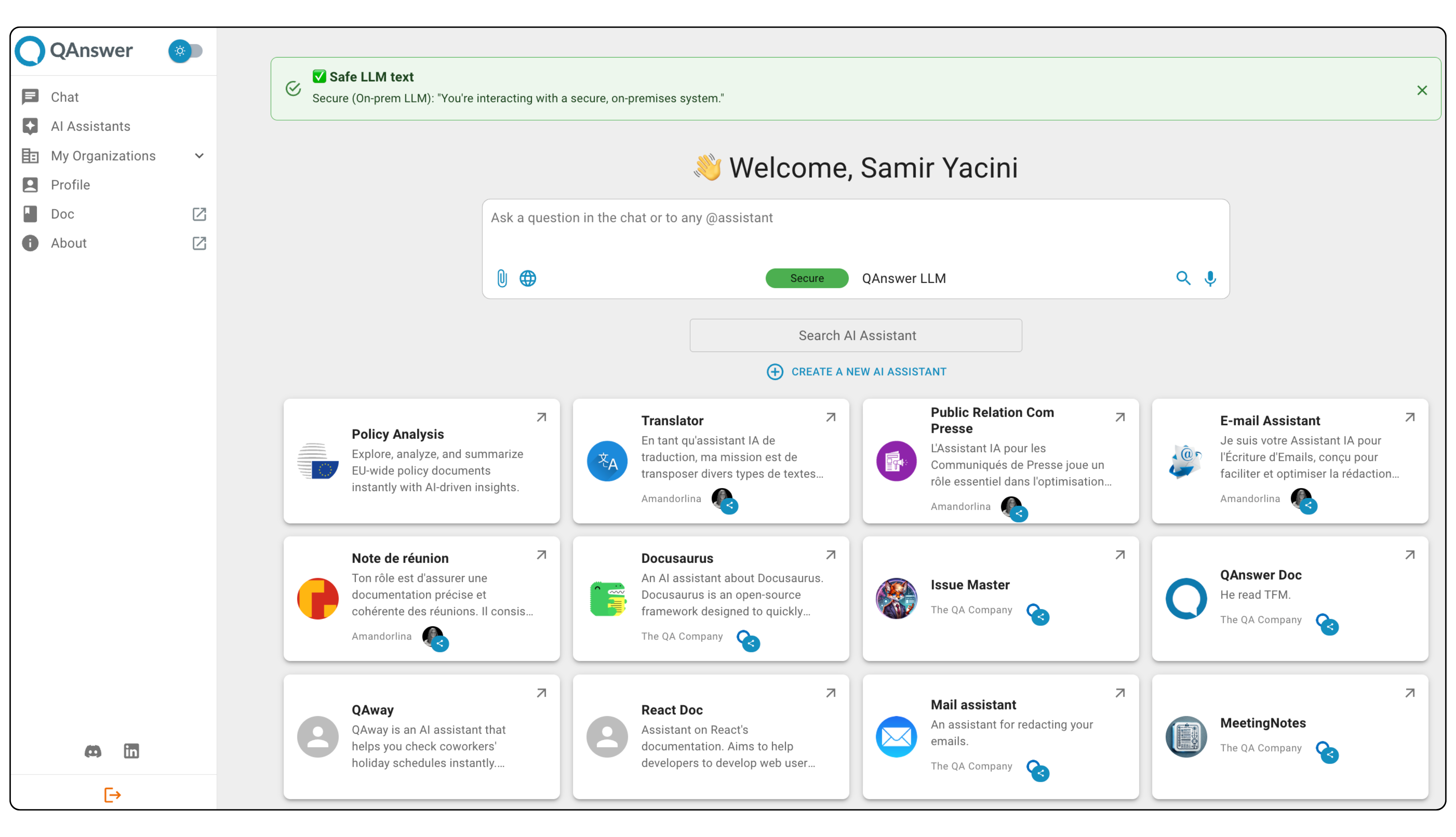
AI chatbots are no longer futuristic gimmicks—they are powerful business tools transforming how enterprises operate. With the rise of generative AI, chatbots can handle a wide range of tasks that traditionally required human effort. From summarizing documents to writing emails, today’s AI-powered bots are reshaping productivity across industries.
In this article, we explore the top chatbot use cases that help automate routine business functions, improve efficiency, and reduce operational costs.
🎥 Watch how AI chatbots are transforming enterprise tasks—see real-world chatbot use cases in action!
1. Creating Meeting Notes
One of the most practical AI chatbot use cases is automatically generating meeting summaries. Instead of manually taking down key takeaways, action items, and decisions, AI assistants can swiftly:
- Generate meetings notes in real-time
- Identify key action points
- Format structured notes and send them to participants
This saves hours of manual work and ensures that no critical decision goes undocumented—especially useful for HR, sales, and product teams.
2. Language Translation for Global Teams
Language barriers can hinder global operations. AI chatbots equipped with natural language processing (NLP) and translation models can provide real-time translation support across documents, live chat, or internal communication platforms.
Whether translating customer service messages or internal HR documents, multilingual chatbot solutions help enterprises streamline operations in multinational settings—essential for global companies aiming to stay agile.
👉 Pro Tip: Start building your AI assistant for free with QAnswer now!
3. Document Summarization for Faster Decisions
Enterprises are flooded with lengthy reports, contracts, policy documents, and more. Chatbots trained on enterprise data can summarize:
- Legal contracts
- Market research reports
- Technical documentation
- Internal compliance updates
- And more.
This AI chatbot use case reduces time spent skimming through dense content and enables leadership to make faster, data-backed decisions.
4. Generating Press Releases and Announcements
Chatbots trained on brand guidelines and past communications can generate well-structured press releases or internal announcements. With context awareness, they can pull relevant product info, news angles, or executive quotes and format them professionally.
This automation is especially valuable for marketing and PR teams under tight deadlines or launching global campaigns.
5. Reviewing CVs and Screening Candidates
HR professionals often spend hours screening resumes for specific skills, experience, or qualifications. With an AI chatbot, resume screening can be automated by:
- Parsing through large volumes of resumes
- Highlighting relevant matches based on job descriptions
- Flagging inconsistencies or missing data
- Evaluating and scoring resumes based on key parameters and requirements
It not only improves hiring efficiency but also ensures fair and consistent screening practices across departments.
6. Automating Email Writing and Sending
A common enterprise pain point is crafting clear, concise emails—especially when scaled across departments. AI chatbots can help by:
- Generating email drafts from templates or prompts
- Personalizing outreach for sales or customer service
- Integrating with CRMs or email platforms to automate dispatch
This saves teams from repetitive tasks and maintains a consistent tone across enterprise communications.
7. Creating Job Descriptions with Precision
Writing compelling, inclusive, and SEO-optimized job descriptions is crucial for attracting top talent. Chatbots trained on successful JD formats and industry-specific terminology can:
- Generate role-specific job descriptions
- Include legal or diversity disclaimers
- Tailor content for platforms like LinkedIn or Indeed
Recruiters can input the role type, key responsibilities, and skills, and the chatbot delivers a professional draft in seconds.
👉 Create your AI chatbot with QAnswer—customized for your business.
8. Customer Support and Query Resolution
One of the most mature chatbot examples in the enterprise space is customer service automation. AI-powered chatbots can:
- Handle FAQs 24/7
- Route complex queries to live agents
- Personalize responses based on user profiles
- Integrate with other websites and applications (like Microsoft Teams, Slack or Discord)
This not only improves customer satisfaction but also reduces workload on human agents and operational costs.
9. Knowledge Base Access & Internal Query Resolution
Employees often waste time searching for policies, onboarding documents, or SOPs. A chatbot built on internal enterprise data can serve as a centralized knowledge assistant:
- Answer HR and IT questions instantly
- Retrieve company policy documents
- Help with onboarding, compliance, or procurement tasks
This empowers teams to be more self-reliant and reduces support ticket volumes.
10. Personalized Employee Onboarding & Training
Another innovative enterprise chatbot application is in personalized training. AI chatbots can act as interactive trainers:
- Guiding new hires through company systems
- Answering FAQs on policies or benefits
- Offering quizzes and feedback for learning modules
This results in smoother onboarding and improves retention, especially in hybrid or remote setups.
Final Thoughts
From streamlining internal workflows to enhancing customer interactions, the range of chatbot use cases for enterprises is expanding rapidly. As generative AI and large language models (LLMs) evolve, we can expect even more tailored applications for specific business functions.

Enterprises looking to scale operations, improve productivity, and reduce costs should explore implementing AI-powered LLM chatbots that align with their specific needs. Whether it's HR, IT, marketing, or customer support, the future of automation is conversational.
Build your AI assistant now with QAnswer: https://app.qanswer.ai/
Learn more about QAnswer’s functionalities at: www.qanswer.ai
Interested in a Demo? Drop us an email at: info@the-qa-company.com








